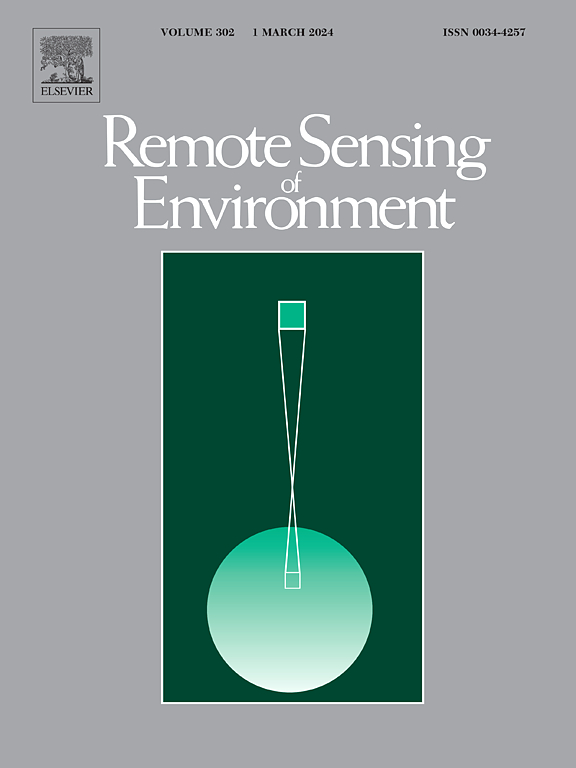Enhanced sea ice classification for ICESat-2 using combined unsupervised and supervised machine learning
IF 11.1
1区 地球科学
Q1 ENVIRONMENTAL SCIENCES
引用次数: 0
Abstract
ICESat-2 provides the potential for high-resolution and accurate measurements of the sea ice state. However, the current ATL07 sea ice height and type product relies on a threshold method for surface type classification, which introduces uncertainties in lead detection, especially in summer. In addition, it only categorizes into sea ice and lead types, excluding gray ice and the dark lead category has been shown to misclassify leads in cloudy conditions. To address these issues, we seek to improve the surface type classification by combining unsupervised and supervised machine learning methods and leveraging coincident imagery obtained from Sentinel-2. First, we use an unsupervised Gaussian Mixture Model (GMM) with four statistical parameters—photon rate, background rate, width of distribution, and height—to group ATL07 segments into 80 clusters. These clusters are then assigned specific surface types—sea ice, gray ice, or lead—based on coincident Sentinel-2 imagery. In the second step, we train a supervised K-nearest neighbor (KNN) classification model using the labeled segments from the GMM as training data. We conduct Leave One Group Out cross-validation of our model using coincident Sentinel-2 images as the ground truth, analyzing 717,009 strong beam and 702,843 weak beam ATL07 segments. The results demonstrate an improvement in lead detection, with precision values reaching approximately 98.6 % for strong beams and 97.5 % for weak beams and recall values of 91.8 % for strong beams and 90.3 % for weak beams. Our approach is applied to both Antarctic and Arctic sea ice, and is extended to include a new gray ice category, which agrees reasonably well with the coincident Sentinel-2 images. Our new sea ice and lead classification approach shows great promise for improving sea surface height and sea ice freeboard retrievals from ICESat-2 and highlights the significant value of coincident satellite imagery for classification training and validation.
求助全文
约1分钟内获得全文
求助全文
来源期刊

Remote Sensing of Environment
环境科学-成像科学与照相技术
CiteScore
25.10
自引率
8.90%
发文量
455
审稿时长
53 days
期刊介绍:
Remote Sensing of Environment (RSE) serves the Earth observation community by disseminating results on the theory, science, applications, and technology that contribute to advancing the field of remote sensing. With a thoroughly interdisciplinary approach, RSE encompasses terrestrial, oceanic, and atmospheric sensing.
The journal emphasizes biophysical and quantitative approaches to remote sensing at local to global scales, covering a diverse range of applications and techniques.
RSE serves as a vital platform for the exchange of knowledge and advancements in the dynamic field of remote sensing.
 求助内容:
求助内容: 应助结果提醒方式:
应助结果提醒方式:


